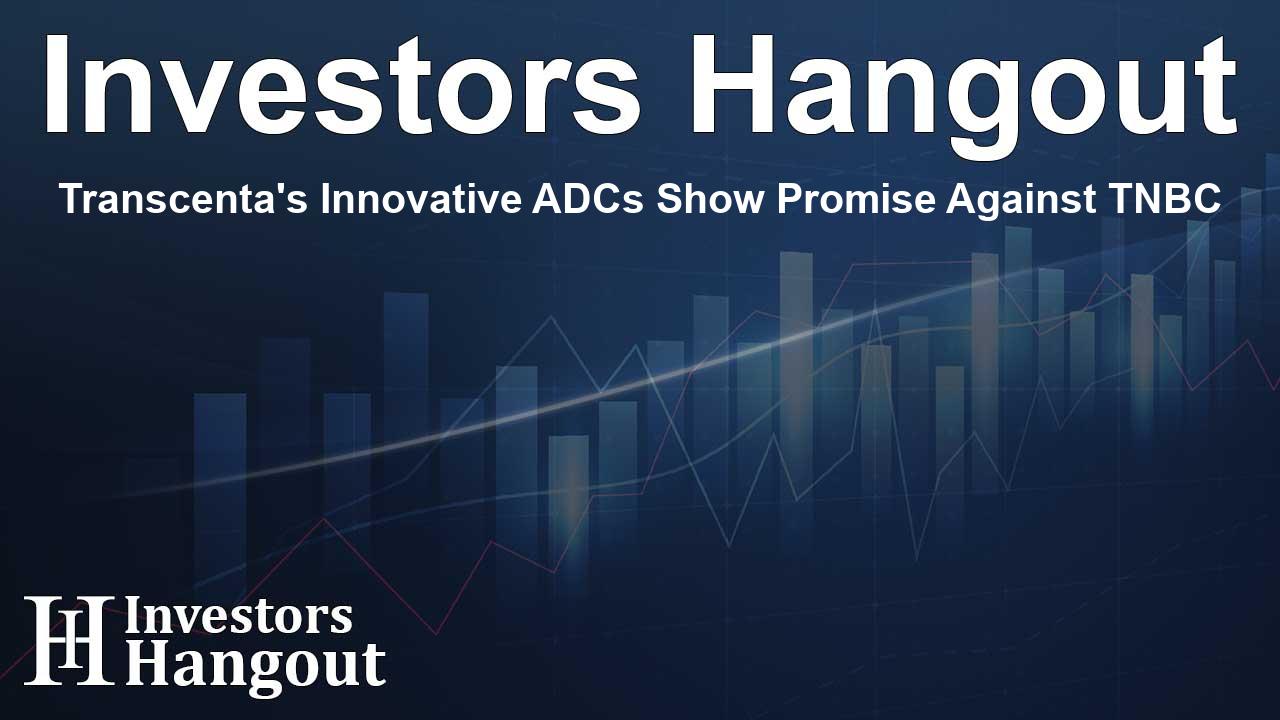Transcenta's Innovative ADCs Show Promise Against TNBC

Transcenta Unveils Breakthroughs in Anti-Tumor Activity
Transcenta Holding Limited (HKEX: 06628), a global leader in biopharmaceuticals, has captured attention with its exciting preclinical study outcomes showcased at a prominent breast cancer symposium. This research is primarily focused on the development of novel humanized LIV-1 targeting antibody-drug conjugates (ADCs), designed to combat triple-negative breast cancer (TNBC) more effectively than previous treatments.
The Challenge of Triple-Negative Breast Cancer
TNBC represents one of the most aggressive subtypes of breast cancer, notorious for its high recurrence rates and treatment challenges. Traditionally, systemic chemotherapy and immunotherapy serve as standard treatments, yet the results often do not last long, highlighting the urgent need for more effective therapies.
The Role of LIV-1
LIV-1, part of the zinc transporter family, has been identified as a critical factor in breast cancer proliferation, being overexpressed in approximately 93% of breast cancer cases. Its prevalence is significant, making it an excellent target for therapeutic interventions. Transcenta's novel antibody constructs are targeting this very protein to deliver a more potent treatment option.
Innovative Approaches to Antibody-Drug Conjugates
Transcenta developed a humanized anti-LIV-1 monoclonal antibody, referred to as 48D6. This innovative approach ensures a high binding affinity and specificity, promising enhanced internalization within tumor cells. The conjugation strategy employed effectively minimized non-specific FcR binding, leading to improved pharmacokinetics and enhanced therapeutic profiles in animal models.
Discovery of New ADCs
In response to the observed sensitivity of breast tumor cells to Topo I inhibitors, Transcenta engineered two distinct ADCs: ADC-1 and ADC-2. These constructs maintain a drug-to-antibody ratio (DAR) of 4, which is crucial for their efficacy. The preliminary in vitro studies revealed that these ADCs not only surpassed the MMAE based ADCs in effectiveness but also demonstrated significant tumor cell killing capabilities when tested in live subject models.
Promising Results from Preclinical Studies
Both ADC-1 and ADC-2 achieved substantial tumor growth inhibition in established TNBC models, demonstrating an impressive response rate compared to traditional therapies. In a controlled setting, ADC-1 achieved a 92.4% tumor growth inhibition, while ADC-2 surpassed this with 94.7% at a dosage of 3 mg/kg. Importantly, the overall response rates for these ADCs were significantly higher than those associated with MMAE-based controls, showcasing their potential as next-generation treatments.
Expert Insights on Efficacy
Dr. Xueming Qian, the CEO at Transcenta, expressed enthusiasm for the findings, explaining that the remarkable anti-tumor activities stem from the strong binding affinity of the 48D6 antibody paired with the cytotoxic properties of the Topo I inhibitors. The data presented underline the potential for ADC-1 and ADC-2 as promising therapeutic agents, particularly for patients with LIV-1 positive breast cancer and other solid tumors.
A Glimpse into Major Events
The research was unveiled during a major symposium that attracted top minds in oncology, emphasizing advancements in breast cancer research. The event served as a critical platform for sharing innovative therapeutic developments aimed at improving patient care and outcomes.
About Transcenta
Transcenta is not just a player in the biopharma landscape; rather, it is a pioneering company dedicated to combating illnesses through its advanced clinical-stage research capabilities. With a broadening global footprint, the firm operates out of several key research and manufacturing hubs, signaling its commitment to advancing treatment options for various health challenges.
Frequently Asked Questions
What are ADC-1 and ADC-2?
ADC-1 and ADC-2 are novel antibody-drug conjugates developed by Transcenta to target LIVE-1 in triple-negative breast cancer for enhanced treatment efficacy.
Why is TNBC challenging to treat?
TNBC is notoriously aggressive with high recurrence rates and generally short-lived responses to existing therapies, necessitating the development of more effective treatments.
What is the role of LIV-1 in cancer?
LIV-1 is overexpressed in many breast cancer types, making it a suitable target for ADC development, thereby enabling focused therapeutic strategies.
What results did Transcenta report?
The preclinical study results showed that the ADCs developed exhibited significantly higher tumor regression compared to existing therapies.
What does the future hold for Transcenta's research?
Transcenta plans to continue its investigations into ADC-1 and ADC-2, potentially leading to new treatment options for patients with LIV-1 positive cancers and expanding into other indications.
About The Author
Contact Hannah Lewis privately here. Or send an email with ATTN: Hannah Lewis as the subject to contact@investorshangout.com.
About Investors Hangout
Investors Hangout is a leading online stock forum for financial discussion and learning, offering a wide range of free tools and resources. It draws in traders of all levels, who exchange market knowledge, investigate trading tactics, and keep an eye on industry developments in real time. Featuring financial articles, stock message boards, quotes, charts, company profiles, and live news updates. Through cooperative learning and a wealth of informational resources, it helps users from novices creating their first portfolios to experts honing their techniques. Join Investors Hangout today: https://investorshangout.com/
The content of this article is based on factual, publicly available information and does not represent legal, financial, or investment advice. Investors Hangout does not offer financial advice, and the author is not a licensed financial advisor. Consult a qualified advisor before making any financial or investment decisions based on this article. This article should not be considered advice to purchase, sell, or hold any securities or other investments. If any of the material provided here is inaccurate, please contact us for corrections.
